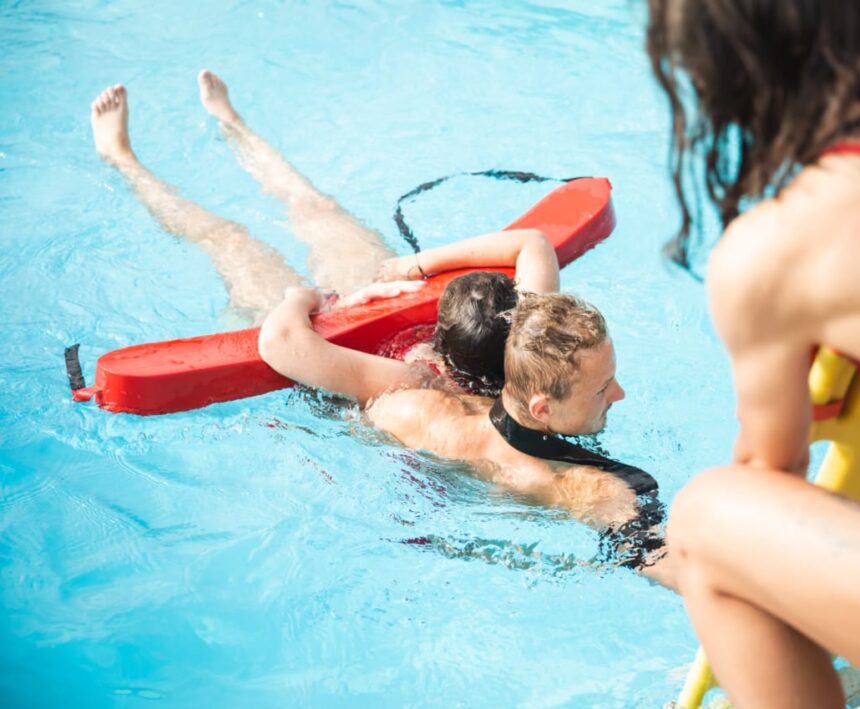Lifeguard training is a fundamental piece of ensuring water safety in different aquatic environments. From public pools to beaches and water parks, lifeguards play a crucial role in preventing accidents and noting truly during emergencies.
Lifeguard training programs, oftentimes including lifeguard classes near me, are expected to equip individuals with the fundamental skills and knowledge to manage numerous conditions.
Significance of Lifeguard certification
One of the central parts of lifeguard training is accomplishing lifeguard certification. This certification approves that a lifeguard has gone through the expected training, passed assessments, and showed capability in essential lifeguarding skills. Lifeguard certification isn’t simply a piece of paper; it addresses a lifeguard’s capacity to secure and save lives in aquatic environments.
Essential Lifeguard Rescue Techniques
Lifeguards are prepared with an assortment of rescue techniques custom-fitted to different situations. Dynamic surveillance is a fundamental perspective where lifeguards persistently filter their assigned regions for indications of pain or likely dangers. This proactive methodology permits lifeguards to intercede rapidly and prevent accidents from occurring.
Moving Toward a Troubled Swimmer
When a lifeguard identifies a bothered swimmer, they should move toward the circumstance with wariness and productivity. A typical technique is “arriving at help,” where a lifeguard broadens a rescue tube or arrives at a gadget to the swimmer from a protected distance. This strategy is especially valuable in shallow waters or when the swimmer can take hold of the gadget without direct physical contact.
Water-Based Rescues
For more profound water rescues, lifeguards use different techniques, for example, the “dynamic casualty front rescue” and the “dynamic casualty back rescue.” In the front rescue, lifeguards swim straightforwardly to the person in question, secure them, and return to safety while maintaining control in the meantime. The back rescue includes moving toward the casualty from behind and executing a comparable move.
Lowered Casualty Rescues
Saving lowered casualties requires specific training because of the additional difficulties of underwater environments. Lifeguards learn techniques like the “uninvolved casualty front rescue,” which is utilized for oblivious casualties. Lifeguards approach the person in question, secure them while maintaining aviation route control, and securely take them to the surface and back to safety.
First Aid and CPR Skills
Notwithstanding rescue techniques, lifeguards are prepared for first aid and cardiopulmonary resuscitation (CPR). These skills are priceless in giving quick attention to casualties until professional medical assistance shows up. Lifeguards learn how to perform chest compressions, rescue breathing, and regulate fundamental first aid for injuries usually experienced in aquatic settings.
Usage of Rescue Equipment
Lifeguards depend on a scope of rescue equipment to aid in their endeavours. Rescue tubes, arriving at posts, backboards, and other particular apparatuses are essential for swift and safe rescues, particularly in testing conditions or when managing numerous casualties. Lifeguards go through training on the best way to utilize and maintain these devices successfully.
Compelling Communication and Coordination
Clear communication and coordination are vital during lifeguard rescues. Lifeguards use hand signals, whistle impacts, and verbal orders to speak with one another and ready swimmers for likely risks. This coordination guarantees a durable response and limits disarray, adding to effective rescue tasks.
Training for Extraordinary Circumstances
Lifeguard training likewise covers strategies for taking care of extraordinary circumstances like spinal injuries and aquatic emergencies. Techniques for spinal adjustment, removal from the water, and giving high-level medical consideration are important for the far-reaching training lifeguards get. Being ready for these situations is essential for maintaining the prosperity of casualties and guaranteeing ideal results.
Accentuation on Preventive Measures
Notwithstanding rescue skills, lifeguards centre around preventive measures to decrease the probability of emergencies. This incorporates upholding safety rules, teaching swimmers about water perils, and maintaining a protected swimming environment. Proactive lifeguarding through preventive measures is vital to advancing water safety and limiting risks.
Nonstop Education and Improvement
Lifeguards participate in nonstop education and skill improvement throughout their careers. Customary training meetings penetrate, and refresh on the most recent lifeguarding techniques and protocols to assist lifeguards with remaining ready and powerful. Lifeguard organizations like the American Lifeguard Association play a crucial role in giving continuous education, certification recharging programs, and assets for lifeguards to improve their knowledge and capacities.
Final Word
Lifeguard rescue techniques are a critical part of water safety, and lifeguards go through broad training, including lifeguard classes close to them, to create and maintain these essential skills. From essential rescue techniques to first aid, CPR, and the utilization of rescue equipment, lifeguards are good to go to answer emergencies and save lives.
Consistent education, powerful communication, and preventive measures are essential components of lifeguarding that guarantee the safety of swimmers and beachgoers in aquatic environments.





